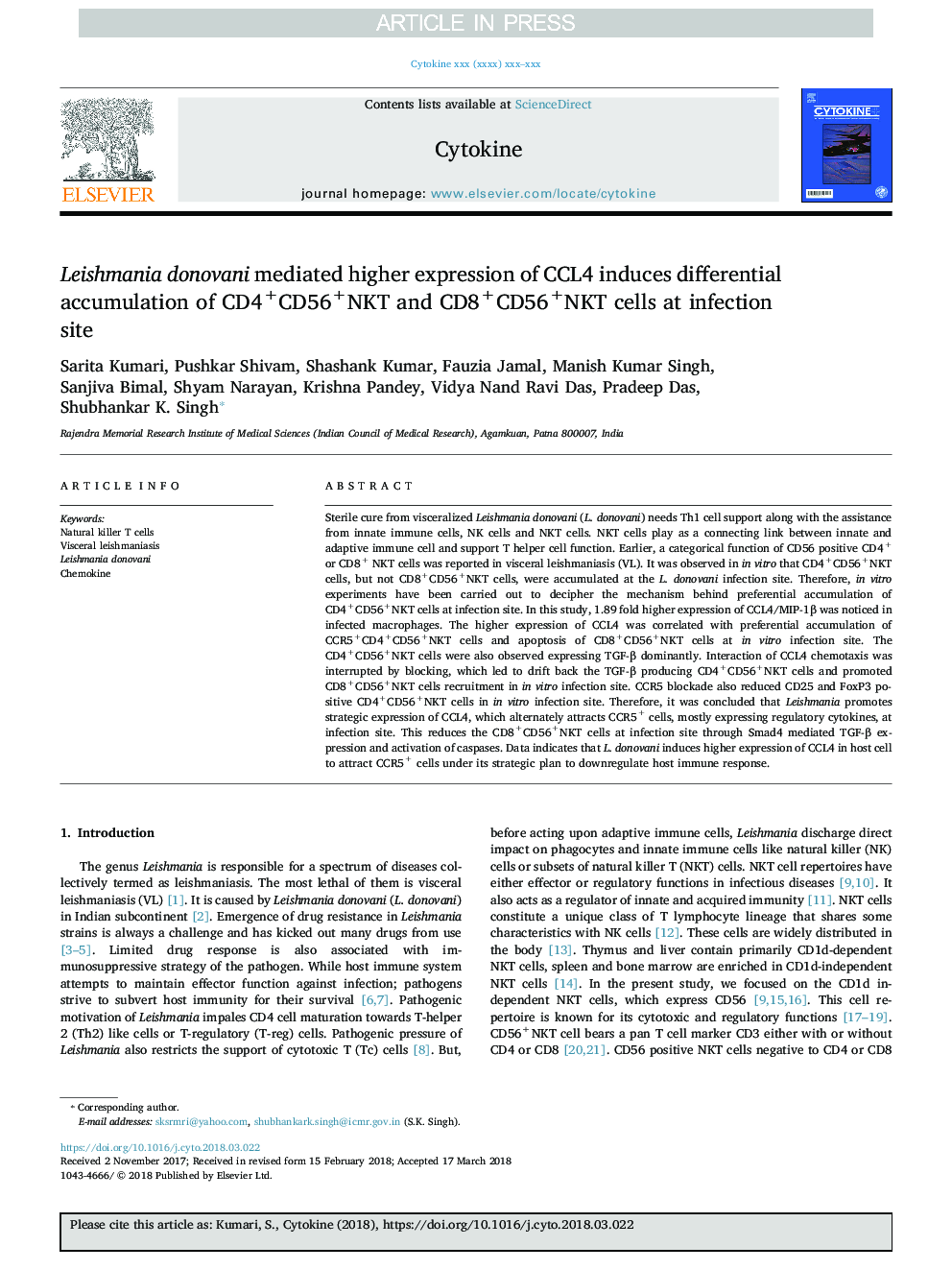| Article ID | Journal | Published Year | Pages | File Type |
|---|---|---|---|---|
| 8628879 | Cytokine | 2018 | 10 Pages |
Abstract
Sterile cure from visceralized Leishmania donovani (L. donovani) needs Th1 cell support along with the assistance from innate immune cells, NK cells and NKT cells. NKT cells play as a connecting link between innate and adaptive immune cell and support T helper cell function. Earlier, a categorical function of CD56 positive CD4+ or CD8+ NKT cells was reported in visceral leishmaniasis (VL). It was observed in in vitro that CD4+CD56+NKT cells, but not CD8+CD56+NKT cells, were accumulated at the L. donovani infection site. Therefore, in vitro experiments have been carried out to decipher the mechanism behind preferential accumulation of CD4+CD56+NKT cells at infection site. In this study, 1.89 fold higher expression of CCL4/MIP-1β was noticed in infected macrophages. The higher expression of CCL4 was correlated with preferential accumulation of CCR5+CD4+CD56+NKT cells and apoptosis of CD8+CD56+NKT cells at in vitro infection site. The CD4+CD56+NKT cells were also observed expressing TGF-β dominantly. Interaction of CCL4 chemotaxis was interrupted by blocking, which led to drift back the TGF-β producing CD4+CD56+NKT cells and promoted CD8+CD56+NKT cells recruitment in in vitro infection site. CCR5 blockade also reduced CD25 and FoxP3 positive CD4+CD56+NKT cells in in vitro infection site. Therefore, it was concluded that Leishmania promotes strategic expression of CCL4, which alternately attracts CCR5+ cells, mostly expressing regulatory cytokines, at infection site. This reduces the CD8+CD56+NKT cells at infection site through Smad4 mediated TGF-β expression and activation of caspases. Data indicates that L. donovani induces higher expression of CCL4 in host cell to attract CCR5+ cells under its strategic plan to downregulate host immune response.
Related Topics
Life Sciences
Biochemistry, Genetics and Molecular Biology
Endocrinology
Authors
Sarita Kumari, Pushkar Shivam, Shashank Kumar, Fauzia Jamal, Manish Kumar Singh, Sanjiva Bimal, Shyam Narayan, Krishna Pandey, Vidya Nand Ravi Das, Pradeep Das, Shubhankar K. Singh,
